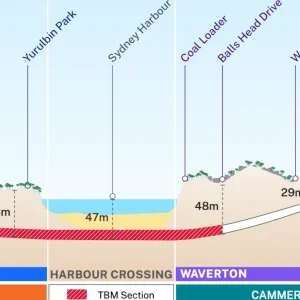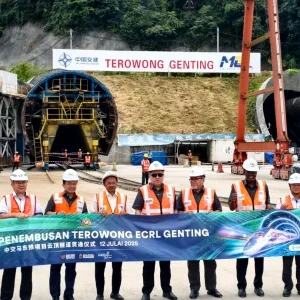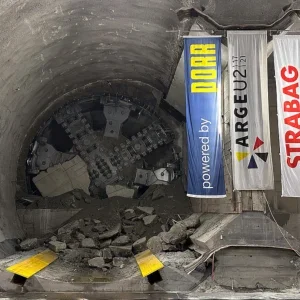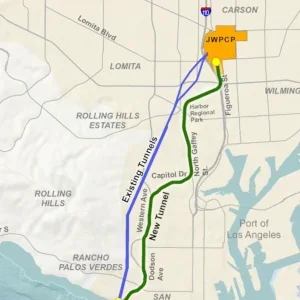The TBM that has been progressing down Second Avenue has completed its first run of approx. 7,200-feet (2,195m). Completion of the west tunnel marks significant progress for phase 1 of Metropolitan Transportation Authority’s (MTA) Second Avenue Subway construction project. Mining began in May 2010 and scheduled to complete by December 2016.
Reconditioned in Newark, New Jersey, this 485-ton, 450-foot (137.2m) long machine is now to be disassembled and returned to 92nd Street to embark on its second run to excavate the east tunnel in spring. Originally manufactured in the late 1970’s by Robbins, it was first used to dig MTA’s 63rd Street tunnel and at least four more projects since; most recently the Fall River CSO Project in Massachusetts.
MTA hopes that Phase 1 of the Second Avenue Subway will reduce overcrowding on the adjacent Lexington Avenue Line by up to 13 per cent, or 23,500 passengers on an average weekday. It will serve more than 200,000 people a day, reduce travel times by up to ten minutes and restore a transit link that was lost in 1942 with the takeover of the Second Avenue Elevated.The TBM that has been progressing down Second Avenue has completed its first run of approx. 7,200-feet (2,195m). Completion of the west tunnel marks significant progress for phase 1 of Metropolitan Transportation Authority’s (MTA) Second Avenue Subway construction project. Mining began in May 2010 and scheduled to complete by December 2016.
Reconditioned in Newark, New Jersey, this 485-ton, 450-foot (137.2m) long machine is now to be disassembled and returned to 92nd Street to embark on its second run to excavate the east tunnel in spring. Originally manufactured in the late 1970’s by Robbins, it was first used to dig MTA’s 63rd Street tunnel and at least four more projects since; most recently the Fall River CSO Project in Massachusetts.
MTA hopes that Phase 1 of the Second Avenue Subway will reduce overcrowding on the adjacent Lexington Avenue Line by up to 13 per cent, or 23,500 passengers on an average weekday. It will serve more than 200,000 people a day, reduce travel times by up to ten minutes and restore a transit link that was lost in 1942 with the takeover of the Second Avenue Elevated.







